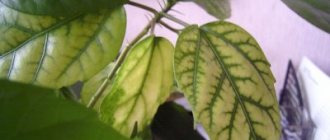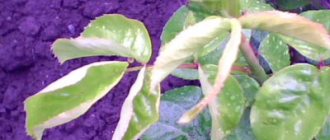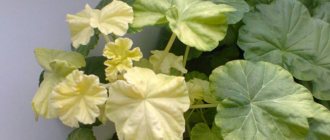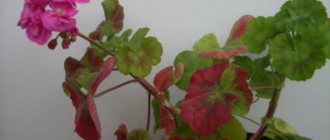Everyone knows that the rose is a gorgeous flower and is rightfully called the “Queen of the Garden.” But unfortunately, we often observe that the leaves of this flower turn yellow.
If this process occurs in the fall, do not worry, this is normal, natural aging and preparation for winter are taking place, the rose sheds its leaves.
You should be wary and pay attention if the rose turns yellow in the summer, when it should bloom and decorate the flower beds.
Next, we’ll look at the reasons why rose leaves turn yellow and fall off: what to do, how to feed and treat the beautiful flower.
Lack of batteries
Yellowing of roses is often associated with a lack of nutrients. The main elements that roses need are:
- Macroelements: nitrogen; potassium; phosphorus.
- Microelements: iron; magnesium; manganese.
If there is a deficiency of one of these basic elements, you can observe: Yellowing of leaves from the edges, completely, in spots.
The site already has an article Feeding roses in spring: how and what is best to fertilize for lush and long-lasting flowering
Lack of macroelements: nitrogen and potassium
| Lack of element | What leaves look like | Signs | How to treat |
| nitrogen | Young leaves become smaller, become pale green, and fall off prematurely. Sometimes red spots appear on them. The stems become bent and weaken. | Use Urea (urea), ammonium nitrate, complex fertilizer: Superphosphate, Potassium Sulfate | |
| potassium | Young leaves are reddish, mature leaves are green with brown, dry edges. The flowers are getting smaller. Potassium deficiency is observed in sandy soils. | Apply complex fertilizer: Superphosphate, potassium sulfate, potassium magnesia, potassium humate | |
| phosphorus | Young leaves become smaller, reddish-purple below, and fall off. The stems bend and weaken. | Apply complex fertilizer: Superphosphate, Potassium sulfate |
Nitrogen
In case of nitrogen deficiency, rose leaves first turn pale, turn completely yellow, and then fall off. Young shoots stop developing. As a rule, the reason for this is planting in nitrogen-poor soil. Immediately you need to carry out nitrogen root feeding.
Important! First, you need to water the rose with clean water.
Nitrogen fertilizing options:
- Urea (carbamide). Prepare an aqueous solution of 2 tbsp. spoons per bucket of water 10 liters.
- Ammonium nitrate (potassium nitrate) .Take 2 tbsp. spoons of fertilizer in a bucket of water. Water 2-3 liters at the root for each bush.
- Cow dung. Infuse 1 kg of manure in 10 liters of water for a week. Dilute 1:10 with water and water 2-3 liters for each flower.
- Bird droppings . Also infuse 1 kg of litter in 10 liters of water for a week, dilute 1:20 and water.
- Green herbal infusion. (2-3 containers of cut nettles and other herbs are filled with water to the brim, left for 7 days, stirring occasionally, watered with a solution of 1 liter of infusion per 10 liters of water.)
Potassium
With a lack of potassium, the lower leaves begin to turn yellow along the edges. The inside of the leaf remains green. Young leaves are reddish in color.
Immediately need to be fed with potassium supplements:
- The simplest potassium supplement is wood ash (potassium + microelements). Pour 2-3 handfuls of ash into the tree trunk circle and loosen the soil.
- Potassium sulfate (potassium sulfate) 2 tbsp. spoons per 10 liters of water or also 2 tbsp. scatter spoons into a circle around the trunk and loosen;
- Potassium nitrate (potassium + nitrogen), feed in a concentration similar to the above;
- Calimagnesia (potassium + magnesium), also 2 tbsp. spoons per 10 liters of water or dry in a circle around the trunk;
- Potassium humate (potassium + microelements), for example, Humate concentration +7 - 1 ampoule per 200 liters of water.
Phosphorus
Phosphorus deficiency manifests itself in redness of the lower leaves. The top ones become small.
General rules for caring for roses outdoors and at home
Caring for rose bushes is quite labor-intensive, since the plants are demanding and not all varieties have good resistance to diseases and pests.
Caring for roses at home
Landing
Roses should be planted in open ground in the fall, but it is necessary to choose the right timing; if planted too early, the bush will begin to produce new shoots, which can cause it to die in frosts. Delay in planting is also undesirable, since the plant will not have time to take root. Then the rose is pruned, removing all weak branches, leaving 5-7 buds on the strong ones. The bush is watered, hilled and mulched. After the first light frosts, the rose is covered.
Removing cover
In the spring, the shelter should be removed gradually, after the snow melts, slightly open the southern side, then every 3-4 days open it more and completely remove the covering material. The spud is removed when the awakening of the kidneys becomes noticeable.
Fertilizer application
The first feeding is done in the spring and then several times during the flowering period. The drug is mixed with the soil around the bush, then watered. It can be applied in dissolved form after watering; the rules and concentration of the solution should be indicated on the packaging.
Attention! Roses do not need to be fertilized with manure and other organic matter. Compost can be applied no more than once every 3 years. It is best to use special complexes for roses.
Watering
Roses should be watered in proportion to soil moisture. In spring, wet soil should not be watered. In summer, water 2 times a month, and more often in hot, dry weather. In the fall, watering is reduced or stopped altogether, and before covering for the winter, the bushes are watered abundantly.
Trimming
This is the most important element of care. Pruning should be done in the spring, removing frozen and damaged branches. In the summer, roses are pruned depending on the variety, and in the fall in order to prepare the bushes for shelter for the winter.
Features of caring for indoor roses:
- In winter, home roses need rest. This means that after flowering is completed, watering is reduced, the branches are shortened by one third, and the flower pots are moved to a cooler room.
- Pruning is done twice a year - before wintering and during flowering.
- It is necessary to maintain optimal temperature and humidity.
Lack of microelements: iron, magnesium, manganese
| Lack of element | What leaves look like | Signs | How to treat |
| magnesium | The middle of the leaf is pale, the tissue dies near the central vein. It appears more on older leaves. Leaves fall prematurely. | Use magnesium sulfate (magnesium sulfate) | |
| iron | It is especially noticeable on young leaves. The leaves turn yellow. reddish, adults - green with brown dried edges. The flowers are getting smaller. Potassium deficiency is observed in sandy soils. | Reduce lime content in the soil. Apply complex fertilizer: Ferovit, you can try iron sulfate. MultiTonic, Toprose | |
| manganese | More noticeable on older leaves. Yellow stripes between the veins on the leaves. | Reduce lime content in the soil. Fertilizer MultiTonic, Manganese sulfate. |
Magnesium
With a lack of magnesium, the middle of the leaf turns yellow, reddish spots appear, and the edges remain green. Yellowing occurs first on the lower old leaves, then rises higher.
It is worth using as a supplement
- magnesium sulfate (magnesium sulfate);
- 2 tbsp. spoons into a bucket of water.
Iron
Often rose leaves turn yellow due to iron deficiency, which leads to chlorosis of the young upper leaves of the flower. The entire leaf turns yellow, the veins remain green. Iron deficiency can be compensated by:
Ferovit 1 ampoule per 1.5 liters of water. Spray.
By the way! Some advise using iron sulfate. At the same time, you will also carry out antimicrobial treatment.
Read more in our article Using iron sulfate in gardening in autumn and spring: when and how to process, instructions for use .
Manganese
Manganese deficiency manifests itself in damage to the lower old leaves, which turn yellow from the edges to the middle of the leaf, while the veins remain green.
Feeding:
- manganese sulfate;
- 2 tbsp. spoons into a bucket of water.
Important! Deficiency of iron and manganese is observed in alkaline soil conditions (pH above 7); it is necessary to bring the soil to a normal and slightly acidic reaction pH of 5-7. This can be achieved by mulching the roses with pine needles or peat.
Lack of lighting
Due to a lack of sunlight, the leaves of the rose may begin to turn yellow (usually the lower ones, since they are less well lit), as well as the stems become thinner and the flowers become smaller. Therefore, it is recommended to place the rose garden in sunny areas, while carefully ensuring that there is no thickening (this is why roses, especially climbing roses, should be regularly pruned and thinned - in spring and/or autumn (for the winter ).
Improper watering
Roses require moderate watering. Overmoistening of the soil leads to oxygen starvation. The leaves below begin to turn yellow, the entire leaf blade becomes yellow.
Watering should be reduced. And if roses are planted in heavy clay soil, replant them with drier and lighter soil.
Perhaps, on the contrary, your rose does not have enough humidity and watering is insufficient, the leaves turn yellow, curl and fall off.
In this case, you need to increase the frequency and volume of watering and mulch the tree trunk circle to prevent the soil from drying out.
The leaves of a garden rose are turning yellow
Flower growers hold roses in a special place; they are the pride and beauty of a flower bed or front garden in a dacha. Culture grows only with careful supervision. Yellowed foliage is a signal of starvation of the bush or the result of an error in care. The actions of insects and mites also lead to diseases with subsequent drying of the leaves.
If a rose has yellow leaves in the summer, this should alert the gardener
Note! Domestic specimens will not escape the same fate: Chinese roses, miniature ornamental varieties. Most often this happens due to improper transplantation, lack of air humidity, and lack of nutrition in the substrate.
Black spot
The main symptom is the appearance of spots on both the outer and inner sides of the lower leaves. The leaves turn yellow, dry out and fly off. This is a dangerous fungal disease, the bush loses all its leaves, this leads to weakened immunity and simply freezes in winter.
How to prevent infection?
- Like all fungal diseases, black spot develops rapidly in a humid environment. All spraying should be stopped if the first signs of the disease are noticed.
- It is necessary to clear the tree trunk of fallen leaves, in which fungal spores can live, overwinter and reproduce.
- Important! In spring, roses should be pruned. It is necessary to remove all old and weak shoots. How to do this correctly, read our article Caring for roses in the spring after winter in the open ground: video instructions for pruning, fertilizing and treating against pests
- If flowers are affected by black spot, it is necessary to treat with the following fungicides (drugs against diseases).
For prevention and protection:
- Topaz;
- Bordeaux mixture;
- Oksikhom;
- Home;
- Abiga Peak.
For protection and treatment:
- Speed;
- Profit Gold;
- Ridomil Gold;
- biological preparation - Fitoverm. There is a very informative article on the site Biological insecticide Fitoverm: instructions for use, reviews, when to treat plants and how
Watch the video! How to treat roses for black spot
Important! It is always easier to prevent a disease than to treat it; take preventive measures in time - spraying with antifungal drugs, rather than rushing to treat when all the leaves have already turned yellow and are covered with black spots.
Prevention
Disease prevention can be achieved by regularly maintaining optimal humidity levels. The plant can be treated with Actellik. Excessive dosage of the product must be diluted with anti-flea shampoo. Don’t forget to water the plant’s soil.
You can protect a plant from aphids if you plant it at some distance from each other. Between the bushes it is necessary to plant plants that repel aphids (lavender). When there are not very many aphids, the leaves can be torn off. In a situation where aphids infect the plant completely, you need to use special solutions.
For more information about the problem and how to fix it, see here:
Rust
Signs of the disease:
- Orange tubercles appear on the back of the leaf and rapidly increase in size.
- The reverse side of the sheet is covered with a rusty coating.
How to fight rust on roses?
Doing this is quite difficult. Only complete removal of all leaves will help.
- The bushes are treated with copper-containing preparations: Bordeaux mixture;
- copper sulfate;
- biological preparation Fitosporin.
Factors that adversely affect flower development
To help a flowering plant, you first need to understand why the leaves of an indoor rose turn yellow. Sometimes the problem can be solved by simply moving the plant to another location. Most often, the pot has to be moved to a windowsill that is not exposed to direct sunlight, as it can scorch the foliage.
However, there are situations when other factors are the cause of yellowing foliage. These include the following:
- Using water that is too cold for irrigation. Rose needs liquid at room temperature.
- Exposure to drafts. It is not recommended to place the flower under an open window.
- Abundant or too infrequent watering. Roses need optimal proportions of moisture in the soil.
- Lack of fresh air. In summer, it is recommended to take the pot with the plant to the terrace or garden.
- Lack of nutrients. The rose needs systematic fertilization.
- Violation of planting technique. If it is necessary to transplant a crop, this should be done with extreme caution. It is best to carry out the procedure in winter - for example, in February. This will make it easier for the culture to take root.
- Powdery mildew. If we are talking about a flower such as the domestic rose, the leaves turn yellow and fall off quite often due to the development of powdery mildew. At the same time, the foliage is also covered with a white coating. It appears when there is an excess of fertilizers or a lack of fresh air.
- Rust. At the same time, tubercles appear on the plant. The cause of the problems is excessive watering and increased room temperature.
- Thrips. Such pests attack crops in low humidity conditions. At the same time, the leaves become gray-yellow.
- Spider mites. Insect activity is observed in conditions of increased dry air or when there is insufficient space for plants.
Mosaic
A viral disease manifests itself in the appearance of yellowish stains on the leaves.
Is it possible to get rid of mosaic on roses?
- Viral diseases cannot be treated.
- You can do heavy pruning to remove all infected leaves.
- Treat several times with Skor, Ridomil and Strobi.
In any case, if the plant receives sufficient nutrition and looks quite strong, then there is no need to get rid of such a rose yet. Try to save.
Reason 6. Pest damage
Causes of yellowing rose leaves.
Black spotting is not a natural process of leaf aging, but an infectious disease that requires treatment. Damage from sucking pests is also a common cause of yellowness on leaves (
What else affects the yellowing of leaves?
What does improper watering mean? It is strictly forbidden to water the rose garden with ice or even cold water. It is advisable that it is not hard - if possible, collect rainwater. You need to water the rose as the soil dries out; in hot weather, increase the amount of watering. The best time to water on sunny days is in the morning while the sun is low or in the evening after sunset. If you water in hot weather, the water that gets on the leaves will cause burns and brown spots.
Another reason why a rose loses its foliage color is also related to watering. But this time it's unnecessary. You should inspect the soil; if it is constantly wet, the flower is “flooded”. In constant dampness, yellowing and rotting of the green parts of the flower are inevitable. The same thing will happen with a lack of moisture. You cannot overdry the soil - to prevent the formation of a dry crust, it must be “diluted” with sawdust, small expanded clay and, of course, loosened.
The rose is sun-loving, so a lack of lighting will also manifest itself as yellowing of the leaves. It is advisable to transplant it to a sunnier place, or regularly trim the lower part of the rose bush. This will provide more sunlight to the plant. If you plan to plant the rose in a shady place, you can select shade-loving varieties.
Excessive foliage density can also spoil the color - the plant needs frequent pruning. Yes, and it is better to plant bushes away from each other.
Rose is royalty among the flower family. It is quite capricious, but with proper care it will bloom luxuriantly and delight with green foliage. Practical advice and a detailed description of the causes of the “illness” will help prevent it from turning yellow.











